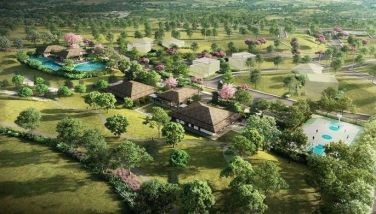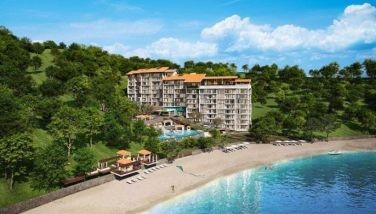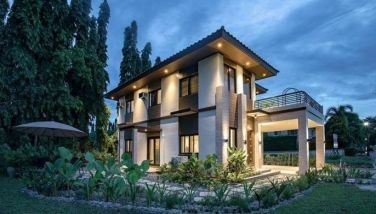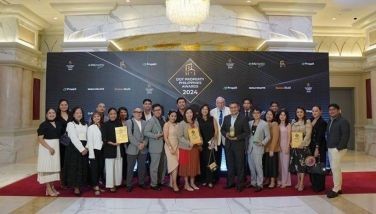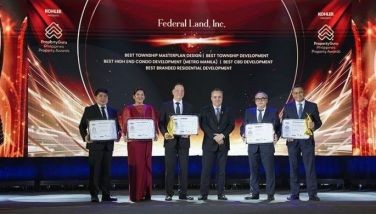Subic, Clark face housing shortage
MANILA, Philippines - The country’s biggest and most progressive economic zones are faced with the prospects of losing possible investments from multinational investors if they fail to address the problem of housing development in their respective areas.
Despite the growing interest of global corporations to set up operations in Subic and Clark Freeport Zones, the current shortage in inventories of residential units in these economic zones has started to negatively impact on the decision-making process of would-be investors.
Subic Bay Metropolitan Authority (SBMA) administrator and CEO Armand Arreza in an interview with the STAR admitted that there is indeed a need to step up housing development not only within Subic Freeport but likewise in areas and communities surrounding the zone.
Arreza said that he fully subscribes to the idea that the development of housing facilities located either inside Subic or very nearby communities could boost the profitability and economic efficiency of corporations or industries doing business within the zone.
“This (housing development) is what we are working-out right now.” Arreza said.
He explained that critical infrastructures are now in place specifically the port development, industrial areas and even tourism and leisure related sites.
Arreza said that SBMA’s current administration for the past years has been steadfast in maximizing the full potential of Subic to become one of the country’s major industrial, investment and tourism hub.
He said most, if not all. of the residential housing units in Kalayaan and Binictican housing areas have already been leased out by either SBMA or by housing developers since the Americans left the former Subic Naval Base almost 20 years ago.
There are some “pocket” residential developments within Subic’s Freeport zone. But based on recent surveys done by local real estate practitioners in Central Luzon, most of these developments are medium rise condominiums and the pricing (lease cost) has skyrocketed, making it less affordable considering that its just being leased out for a minimum of 25 years.
The situation in Clark is much more alarming.
There are just a couple of housing developments inside the Clark Freeport and both are being developed by Korean developers. The less than a hundred units that are currently being built would principally cater to Korean nationals.
Subic and Clark Freeport zones have been established with the aim of developing the area into a self-sustaining industrial, commercial, financial and investment center in the Philippines.
Life communities
Having efficient and decent social and environmental facilities are two of the major pre-requisites of prospective investors particularly multinational firms engaged in specialized industries and related businesses.
The California-style of living in both Subic and Clark can very well provide for a combination of work and leisure-like lifestyle especially for expatriates and their workers.
Likewise, the two economic zones which now boast of complementing infrastructures—Subic’s world-dass Seaport and Clark’s Airport and logistics hub linked by a major expressway that provides seamless travel for goods and services—have started to attract serious investors from global communities.
Supported by dense and efficient infrastructure, Subic in particular can sufficiently meet the life communities requirements of foreign or even domestic investors.
But without the affordable and efficient dwelling units, Subic and Clark will eventually appear un-attractive to both foreign and domestic businesses.
Arreza said that incorporating life communities within the Freeport zone will further boost the investors’ interest in locating their businesses and industries here.
The housing units left by the Americans in both Subic and Clark have already been leased out to individual lessees. Only a handful are selling the “right to lease” of these units. Most of the houses in both Kalayaan and Binictican area have undergone renovations. Most houses had to undergo major repairs as it was all damaged by ash fall following the 1991 Mt. Pinatubo eruption.
Some of the original long term-lessees (25 to 50 year lease) have opted to either lease-out to prospective expats or local investors the residential units either on a monthly basis. A good number of these housing units are leased out to transients, mostly visitors from Metro Manila.
Going rates for daily rentals of two and three bedroom housing units ranges from 7,500-10,000 per day.
The monthly rentals range from 650 to 1,200 US dollars.
New housing developments
 SBMA has started to solicit for possible joint-venture partners from among the established housing developers.
SBMA has started to solicit for possible joint-venture partners from among the established housing developers.
Ayala Land’s P3-billion development project in Subic envisions an integrated mixed-use master-planned community which will include a shopping mall, business process outsourcing office building and hotel.
With ALI’s development project in Subic, SBMA has started to open up opportunities for other established real estate developer to invest in residential development within the Freeport zone.
Arreza said that while it is not yet too late for both eco-zones, now is the best time to build-up their respective areas to comply with the demands of investors and locators as they strive to truly make Subic and Clark an investment haven.
- Latest



















